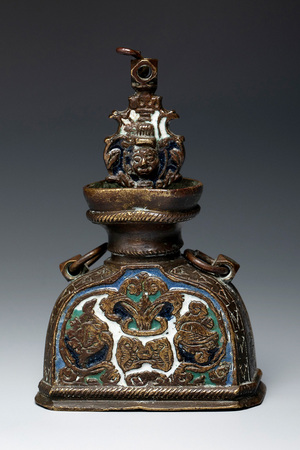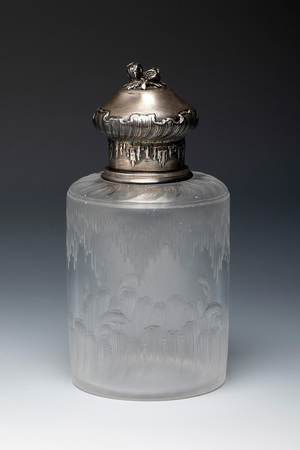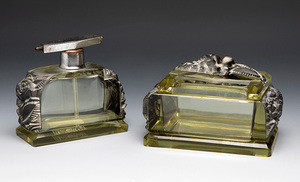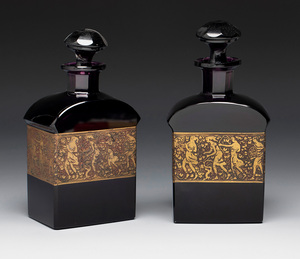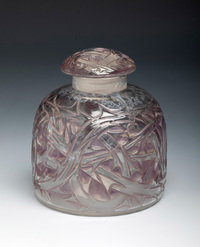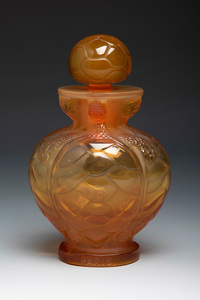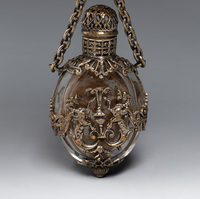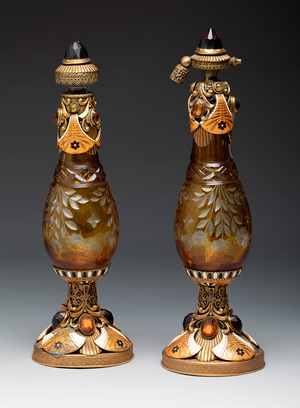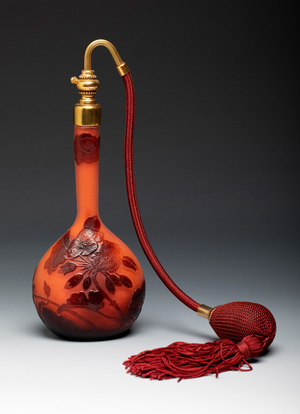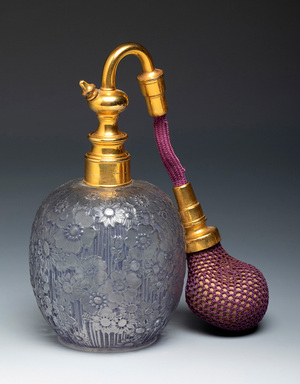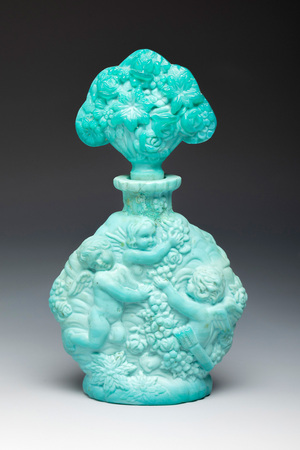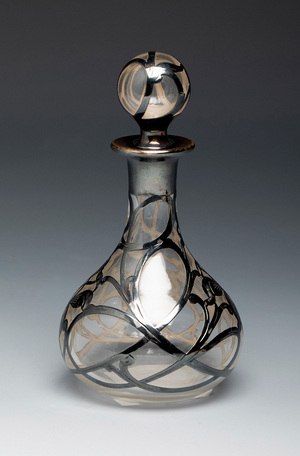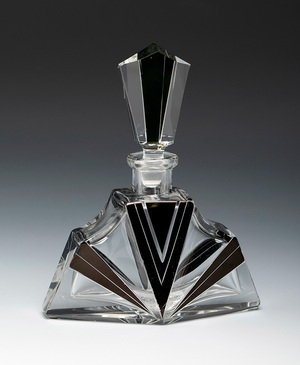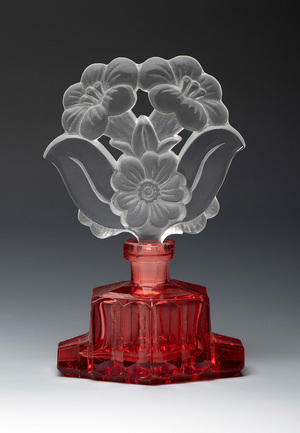Antique perfume bottles, object of desire for collectors.
Auction April 25
The perfumery firms have not only commissioned their formulas from relevant “noses”: they have also ordered the bottles from great craftsmen and consecrated artists. The result is pieces of great value that are acquired to collect.
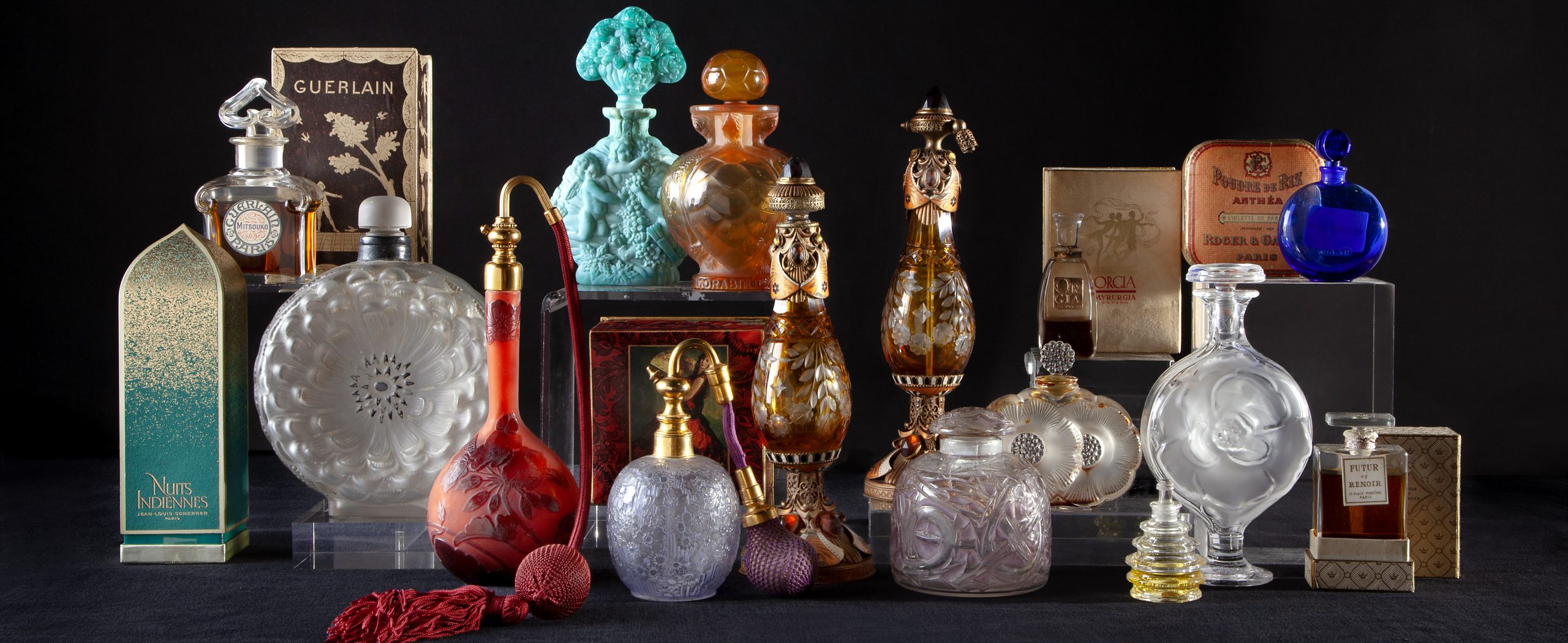
Perfume bottles, with their graceful curves and light-refracting facets, are subtle reminders of more elegant and luxurious times. From ancient Egypt to recent history, perfume bottles have played a role in documenting beauty throughout the centuries.
Today, perfume bottles serve as luxury items, a reminder that in ages past, the dressing table was a place of personalized beauty where form met function in refined style.
Perfume bottles are usually made of glass and have a rounded base with a stopper that, in most cases, is made of the same material or is sometimes lined with metal.. The bottle is filled with a fragrant liquid (perfume), then tilted to deposit the perfume in the stopper, then the stopper is removed and gently rubbed on the skin to apply the fragrance. In more modern times, atomizers were used, allowing the liquid contents to be sprayed onto the skin.
Perfume bottles, with their graceful curves and light-refracting facets, are subtle reminders of more elegant and luxurious times. From ancient Egypt to recent history, perfume bottles have played a role in documenting beauty throughout the centuries.
Today, perfume bottles serve as luxury items, a reminder that in ages past, the dressing table was a place of personalized beauty where form met function in refined style.
Perfume bottles are usually made of glass and have a rounded base with a stopper that, in most cases, is made of the same material or is sometimes lined with metal.. The bottle is filled with a fragrant liquid (perfume), then tilted to deposit the perfume in the stopper, then the stopper is removed and gently rubbed on the skin to apply the fragrance. In more modern times, atomizers were used, allowing the liquid contents to be sprayed onto the skin.
THE MANUFACTURERS
While historically perfume bottles were custom-made items, individually handcrafted in small batches, the dawn of the Industrial Revolution ushered in the manufacture of perfume bottles by established glassmakers. In England, both Thomas Webb & Sons and Stevens & Williams Glass Company were known for their cameo perfume bottles, as well as their smaller-sized bottles designed to fit discreetly in a lady’s handbag.
Tiffany was important in the manufacture of perfume bottles, adorning their glass bottles with silver caps that often covered the stopper. René Lalique was perhaps the best-known French perfume bottle maker. Lalique, himself a jeweler, used a jewel casting process called “cire perdue”, to create a jewel-like finish on his bottles.
THE STYLES
Perfume bottles were not only meant to be placed on the vanity table, some perfume bottles were designed to be worn as a necklace or jewelry. Perfume bottle necklaces were popular in the early 20th century with well-known perfume makers like Chanel getting in on the game and designing decorative jewelry pieces that also had their signature scents.
RARE OLD PERFUME BOTTLES
Perfume bottles are a tradition dating back to the Golden Age of the Roman and Egyptian empires. With such a long and rich history, there are many varieties of vintage perfume bottles to collect. Made from a variety of ceramic, glass, and metal materials, perfume bottles remained popular throughout Europe throughout the Middle Ages.
The oldest pieces are very rare and are not only collected by individuals, but also by museums and anthropologists.
ATOMIZERS
Atomizers are a fun part of any perfume bottle collection. You may remember playing with them on your grandmother’s dresser, as they were popular from the late 19th century through the 1960s. Atomizers come in a wide variety of shapes, colors, and materials. Although the bulbs (used to atomize the perfume into a fine mist) may have hardened over time, they are still beautiful pieces to display.
CAMEO PERFUME BOTTLES
Similar to a Wedgwood pottery design, these bottles feature a chalky matte finish, colored porcelain construction, and feature white embossed detailing. Cameo perfume bottles often depict human forms in silhouette or natural elements such as floral motifs. Floating cherub-like figures and symmetrical floral designs can also often be seen on these bottles.
ART NOUVEAU
Art Nouveau perfume bottles are unique and amazing in their designs and details. Similar to Tiffany glass lamps, Art Nouveau perfume bottles, popular in the late 19th and early 20th centuries, feature naturalistic elements such as flora and fauna and soft organic shapes and curves. In fact, Tiffany produced a series of perfume bottles with round glass bottoms and ornately decorated silver caps that covered a glass stopper.
ART DECO
Art Deco perfume bottles gave way to more architectural elements, with clean lines and geometric shapes. They were more streamlined in shape, and although they were still made primarily of glass, they used more metal than designs from earlier eras.
Throughout the 20th century, perfume bottles have become more sophisticated and have retained their elegant style, continuing with the tradition of being luxury items for any dressing table.
Setdart auctions next April 25 a collection of old perfume bottles whose owner dedicated himself to searching, selecting and collecting as a compendium of the designs made since the beginning of the 20th century. In a certain way it could be considered as a very special History of Art since it represents the movements of the different eras since 1900.
The magic of perfume lies in its evocative power and vintage and antique perfume bottles are the perfect way to transport yourself to glamorous bygone eras.

